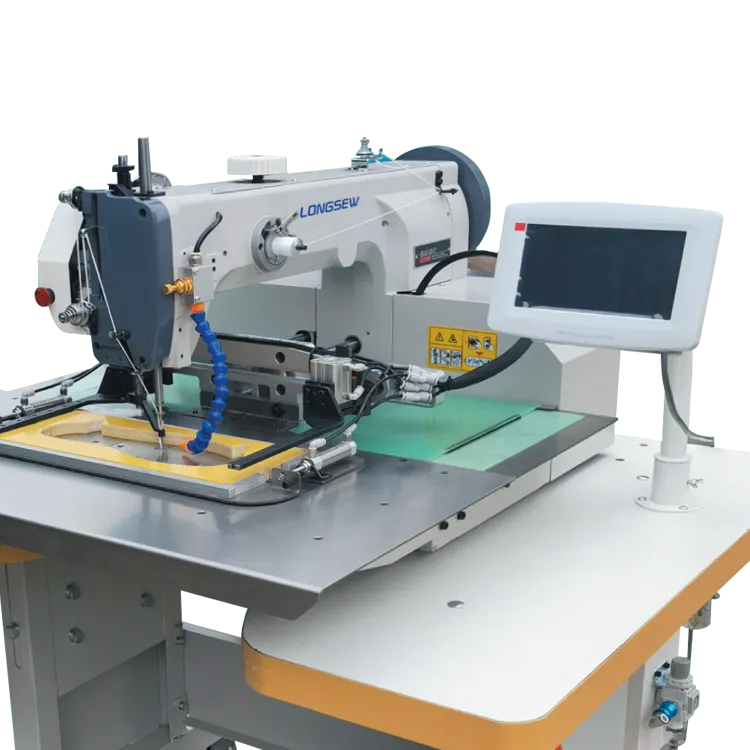twin needle sewing
The Art and Functionality of Twin Needle Sewing
Sewing is an intricate craft that blends creativity with precision, enabling crafters to bring their visions to life through fabric. Among the various techniques and tools available to sewists, the twin needle stands out as a versatile companion that adds both beauty and durability to finished projects. Understanding how to wield a twin needle effectively can elevate your sewing skills and enhance your end products.
A twin needle consists of two needle shafts joined at the top, allowing two threads to pass through simultaneously while using a single sewing machine. This unique design opens up numerous possibilities for decorative patterns and finishes. Twin needle sewing is particularly popular for creating parallel rows of stitching, which mimic the look of professional hems and finishes one might find on store-bought garments.
One of the primary functions of a twin needle is to produce a double row of straight stitches on the right side of the fabric while simultaneously creating a zigzag stitch on the reverse side. This is particularly useful for hems on knit fabrics, where the zigzag stitch provides the necessary stretch. As a result, garments maintain their shape and elasticity, allowing for comfortable wear. The twin needle is especially popular in garment making, quilting, and crafting, where both aesthetics and functionality are crucial.
When engaging in twin needle sewing, selecting the right needle size and thread tension is essential for optimal results. Twin needles come in various sizes, typically ranging from 1.6mm to 4.0mm, accommodating different fabric thicknesses and styles. A smaller needle size is ideal for lightweight fabrics, while larger sizes work better with thicker textiles. Additionally, it’s important to use two spools of thread; these can be the same color for a more cohesive look or contrasting for a striking visual effect.
twin needle sewing

To begin, set up your sewing machine as per the manufacturer's instructions for using a twin needle. It’s vital to adjust the needle position and stitch width to prevent any interference with the needle plate, as twin needles are typically wider than single needles. Fabrics should also be stabilized to avoid puckering, which can diminish the quality of the finish.
The versatility of the twin needle allows for a range of decorative stitching techniques. From creating delicate pintucks to intricate decorative topstitching, the twin needle can help make even the simplest garments special. Furthermore, it is effective in providing a professional touch to quilting projects, where the uniformity of double stitching enhances the overall design.
Despite its wide-reaching benefits, some sewists may encounter challenges when transitioning to twin needle sewing. Common issues include skipping stitches or thread breakage, often due to improper tension or incorrect needle size. With practice and careful adjustments, these issues can be mitigated, ensuring a smooth sewing experience.
In conclusion, twin needle sewing is an invaluable technique that every sewist should consider mastering. With its ability to produce beautiful and functional finishes, it adds both intricacy and durability to sewing projects. Whether you are a seasoned seamstress or a beginner looking to enhance your skills, incorporating a twin needle into your toolkit can inspire creativity and efficiency in your sewing endeavors. Embrace the art of twin needle sewing, and discover the endless possibilities it offers in your crafting journey.
-
Boost Production Efficiency with a Pattern Sewing MachineNewsAug.29,2025
-
Industrial Excellence with the Best Heavy Duty Sewing MachineNewsAug.29,2025
-
Precision and Power with the Best Pattern Sewing MachineNewsAug.29,2025
-
Reliable Bulk Packaging Starts With the Right FIBC Sewing MachineNewsAug.29,2025
-
Advanced Packaging Solutions: Elevate Productivity with Jumbo Bag Sewing Machine and Industrial Stitching EquipmentNewsAug.29,2025
-
High-Performance Solutions for Bulk Packaging: FIBC Sewing Machine and MoreNewsAug.29,2025
-
Maximize Efficiency with an Industrial Cylinder Arm Sewing MachineNewsAug.28,2025


























